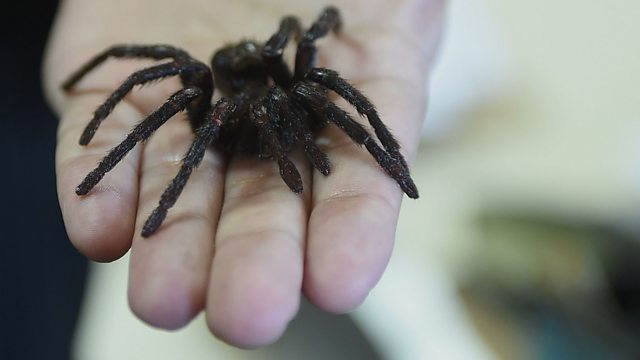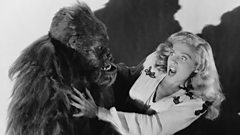Fear of Animals
In this week’s Why Factor Mike Williams enters the terrified world of the animal phobic and faces a fear of his own.
Why do we still fear animals that pose no serious threat to us and how can the effect of that irrational fear be so overpowering? As Mike Williams discovers in this week’s Why Factor, the answers lie deep in our evolutionary past and deep inside our brains.
Mike faces his own animal fear at London Zoo, where we also meet people overcoming their fear of spiders. Arachnophobia is one of the most common animal phobias and American Psychologist Joshua New’s research suggests humans are better at identifying and locating spiders than any other perceived threat. Could our fear of spiders be a leftover from our evolutionary ancestors?
Neuroscientist Dr Dean Burnett reveals what happens in our brains when we’re frightened by animals, and this is not always by the traditional spider or snake. We hear from a woman in Greece who has a rather surprising animal phobia…
Presenter: Mike Williams
Producer: Rose de Larrabeiti
Film clip: 1984 (1984) Umbrella-Rosenblum Films Production. Director: Michael Radford
Image: A tarantula spider. Credit : Credit: Miguel Rojo/Getty Images
Last on
More episodes
Previous
Clips
-
![]()
Why do we have animal phobias - and why spiders?
Duration: 03:52
-
![]()
What's it like to have an animal phobia?
Duration: 01:34
Broadcasts
- Fri 12 Aug 2016 21:32GMT91�ȱ� World Service except East and Southern Africa & News Internet
- Mon 15 Aug 2016 02:32GMT91�ȱ� World Service Online, Europe and the Middle East & UK DAB/Freeview only
- Mon 15 Aug 2016 03:32GMT91�ȱ� World Service East Asia
- Mon 15 Aug 2016 04:32GMT91�ȱ� World Service Australasia
- Mon 15 Aug 2016 06:32GMT91�ȱ� World Service East and Southern Africa & Europe and the Middle East only
- Mon 15 Aug 2016 14:32GMT91�ȱ� World Service except News Internet
Get the podcast
Subscribe or download individual episodes for free
Why do we look the way we do?
Tattoos, trainers, jeans, hair, ties ... why?
Podcast
-
![]()
The Why Factor
The extraordinary and hidden histories behind everyday objects and actions




